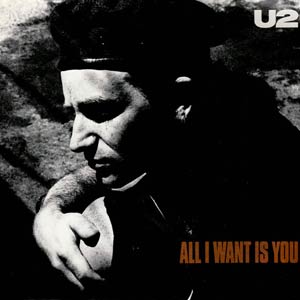Released in 1989 as the closing track and fourth (and final) single from their 1988 album Rattle and Hum, “All I Want Is You” is one of U2’s most emotionally resonant ballads. With its orchestral arrangement, aching vocals, and lyrical simplicity, the song stands as a powerful testament to devotion, vulnerability, and longing.

The track follows Rattle and Hum’s central theme of American musical exploration—blending rock, blues, gospel, and soul—but “All I Want Is You” takes a more classical turn. The song was produced by Jimmy Iovine and features a lush string arrangement by Van Dyke Parks, which builds gradually into a cinematic crescendo. It’s a slow-burning epic that unfolds over six minutes, ending the album not with thunder, but with emotional gravity.
Lyrically, Bono pares things down to the essentials. The verses list all the things the narrator could offer—diamonds, riches, promises—but each is dismissed as inadequate compared to the raw, simple truth of the chorus: “All I want is you.” It’s a line repeated like a mantra, growing more powerful with each iteration. The repetition and sparseness reflect not only deep yearning but also the frustration of love that might not be reciprocated. It’s a love song stripped of romantic illusions, asking for nothing but presence and honesty.
Musically, The Edge’s guitar is understated and textured, Adam Clayton’s bass is restrained yet warm, and Larry Mullen Jr.’s drums provide a slow heartbeat to the track. As the strings swell and the song reaches its peak, it becomes more than just a ballad—it feels like a declaration wrapped in resignation.

The music video, directed by Meiert Avis, adds another layer of meaning. Set in a traveling circus, it tells a tragic love story between a person with dwarfism, played by Paolo Risi, and an aerialist, , played by Paola Rinaldi, ending on a somber, ambiguous note. The visual metaphor of unattainable love and emotional imbalance mirrors the tension in the song itself.
While “All I Want Is You” wasn’t a massive U.S. chart hit, it reached No. 2 in Australia and New Zealand, and No. 4 in the UK and has since become one of U2’s most cherished deep cuts. It’s often included in their live setlists and is praised by fans for its intimacy and orchestral beauty.